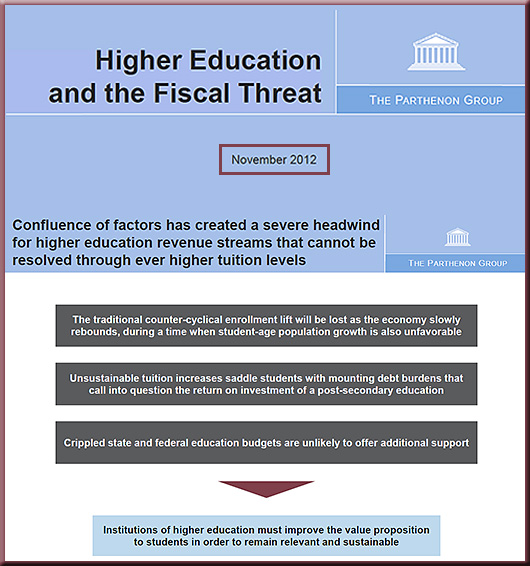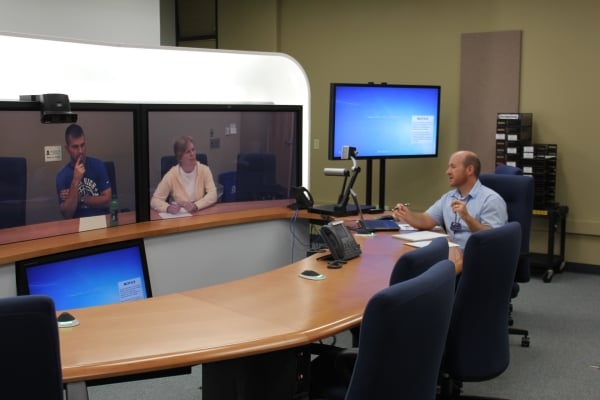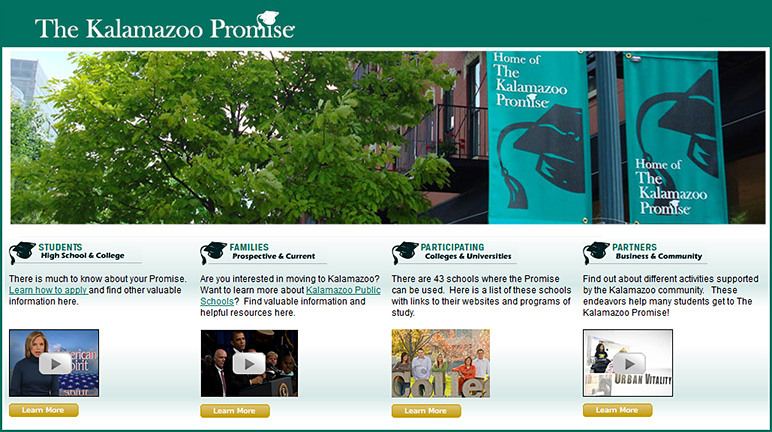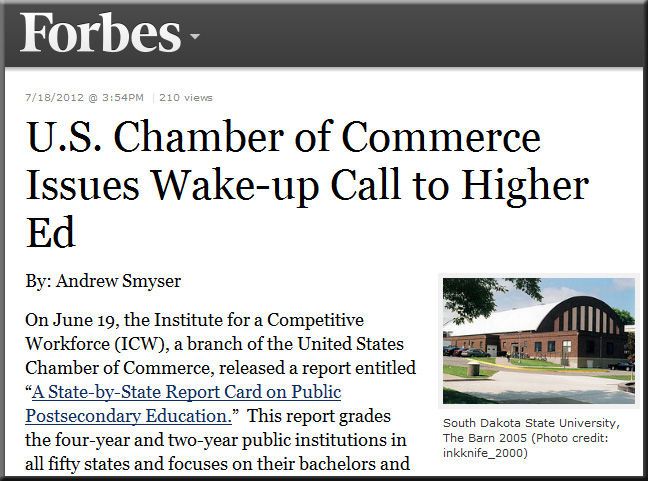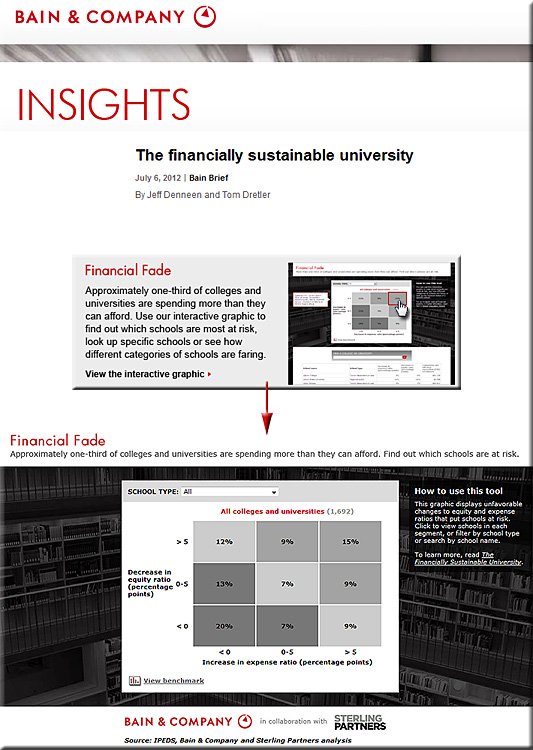Addendum on 12/14/12:
- Big construction costs, MOOC disruption mean ominous cocktail for higher ed — from educationdive.com by Davide Savenije
Dive Summary:- After years of aggressive expansion efforts, higher education is facing the consequences — according to Moody’s, overall debt levels for rated institutions more than doubled from 2000 to 2011 while donations and investments shrank by more than 40% relative to the debt.
- While debt has swiftly reached a tipping point for universities, they are not alone — the total amount of student debt currently exceeds $1 trillion and nearly one in every six borrowers’ student loan balance is in default.
- Experts and school officials are predicting an imminent reshaping of the field of higher education — Harvard’s annual fiscal report claims “the need for change is clear” as institutions face a decreased “ability to generate […] new resources”.
- As prospective students become aware of the decreasing value of the higher ed degree, the sudden emergence of MOOCs are becoming an increasingly viable and economically-friendly alternative.
From DSC:
We had better step up the pace of innovating/experimenting – and move to do so quickly. But the problem is, moving quickly is not in the cultures of most of the more traditional institutions of higher education.
Also relevant:
- As debt rises and job prospects dim, some say it’s time to put a warning label on graduate school — from The Chronicle by Stacey Patton
This isn’t just the year of the massive open online course; it’s also the year of two other hot topics in higher education—student debt and a barren job market for graduating students.









